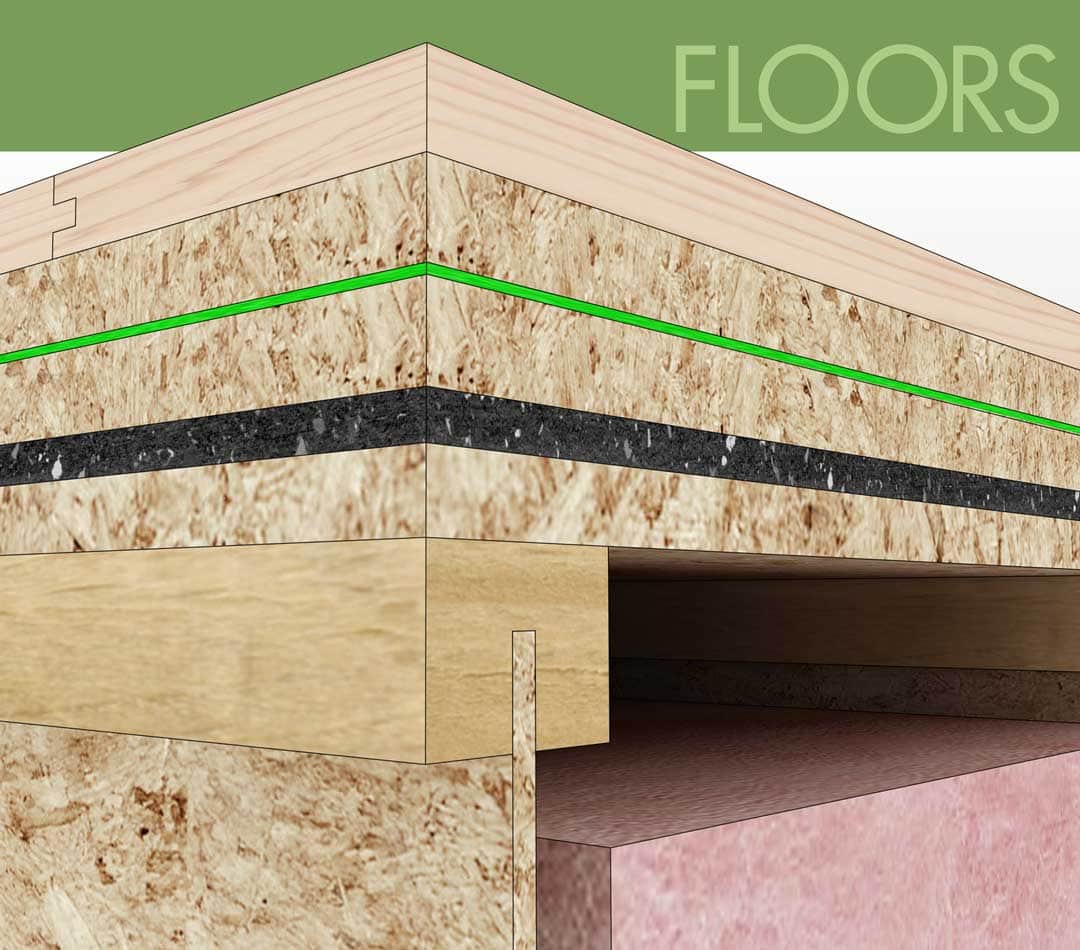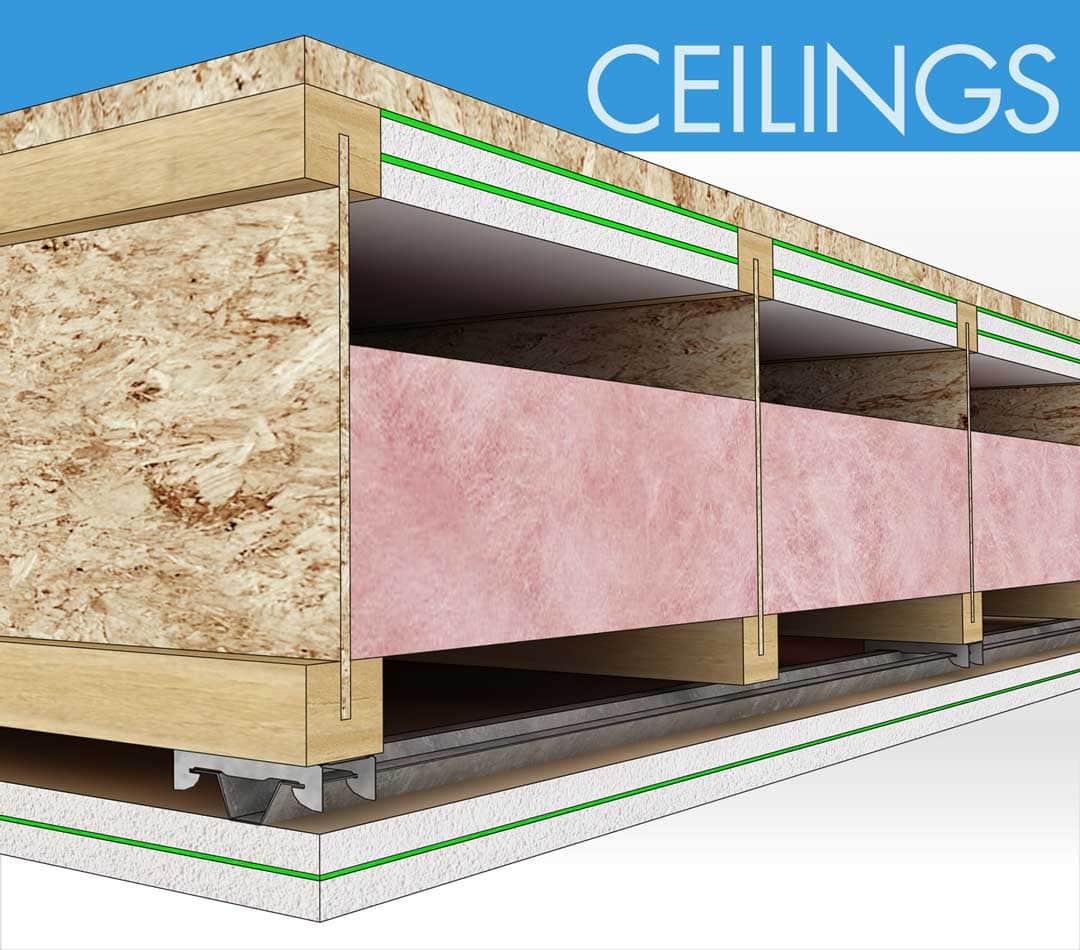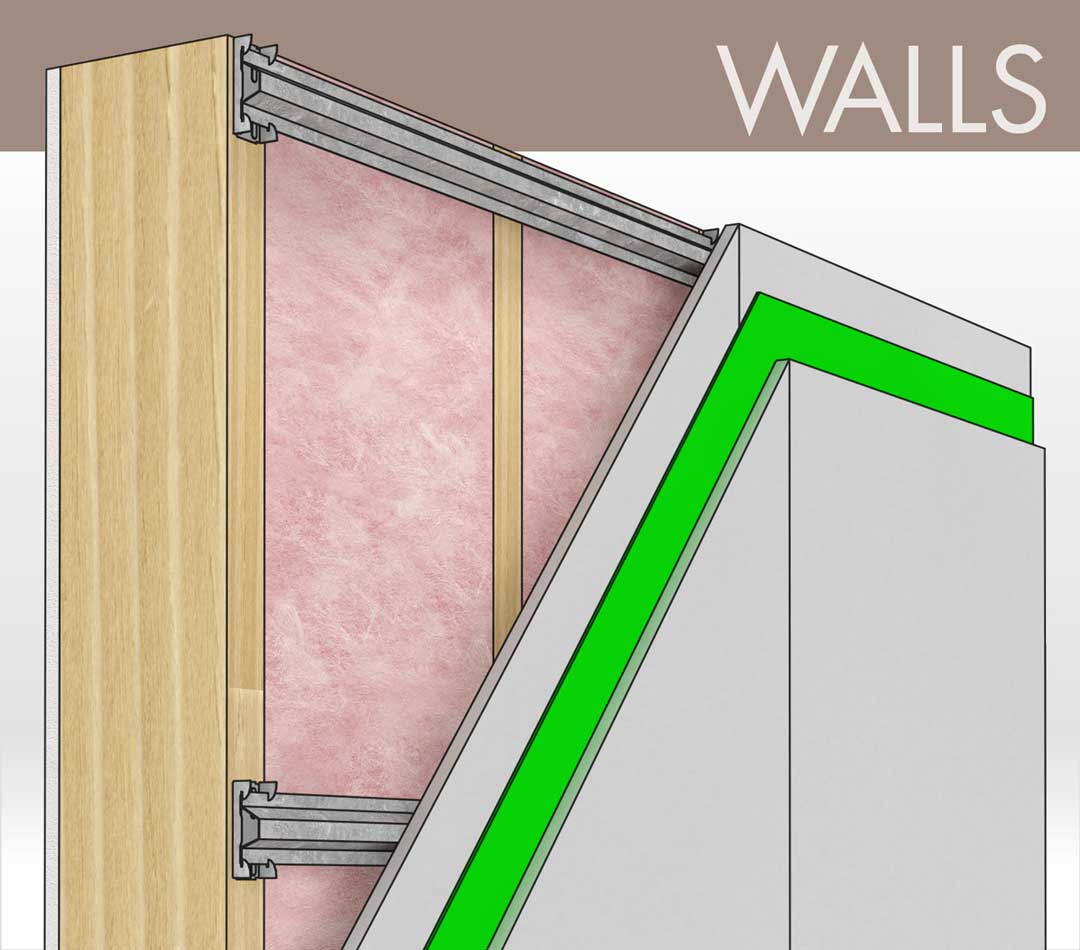Understanding the Triple Leaf Effect and air cavity depth
When you think of a wall that is “really soundproof,” you might think of a concrete block wall. It’s thick, it’s massive… it must be good. But heavy and massive don't necessarily equal soundproof. In fact, not only is it expensive and generally impractical to build a concrete wall, but the sound isolation will only get you a STC in the 45-50 range.
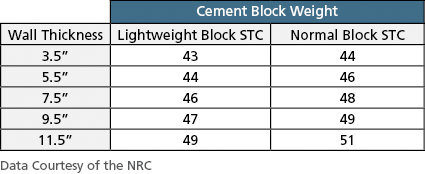
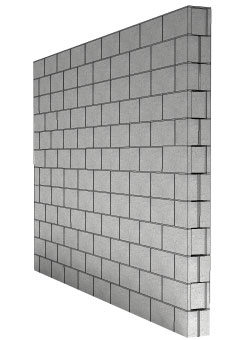 Mass-Air-Mass system
Mass-Air-Mass system
Solid mass is not effective, practical or economical. So what can we do? We can increase our sound isolation if we introduce an air cavity and another leaf. The resulting mass-air-mass system is common and well known. When we design a sound isolation system, we generally incorporate a large air cavity.
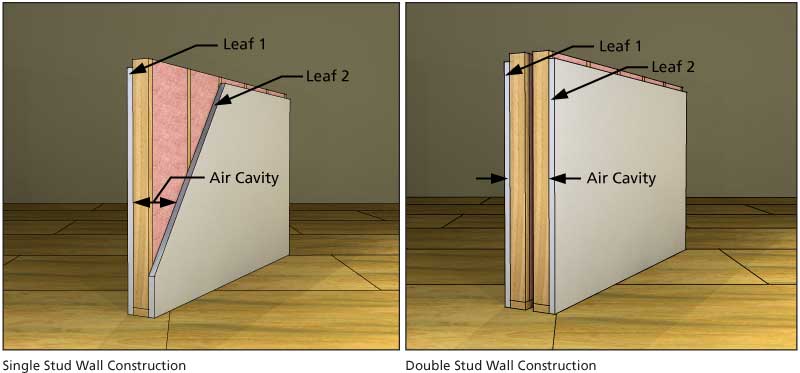
So, what is the Triple Leaf Effect? Is it bad?
If you research soundproofing topics online, you’re bound to come across the Triple Leaf Effect. But what the heck is it? A “leaf” is a layer of mass, like a layer of drywall on a framed wall. A typical wall has one air cavity and two “leaves” of drywall. A triple leaf has three layers of drywall and therefore two air cavities.
You may hear that a triple leaf is to be avoided at all costs. This is partly true, but not because three leaves are inherently bad. The real problem is that a triple leaf often has a small air cavity. A triple leaf wall that has two giant air cavities is not such a bad thing, but a small air cavity can make things much worse.
In most cases, it is much better to remove the leaf in the middle to join the two smaller air cavities into one large one.
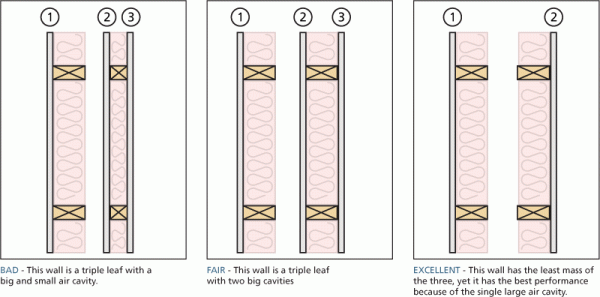
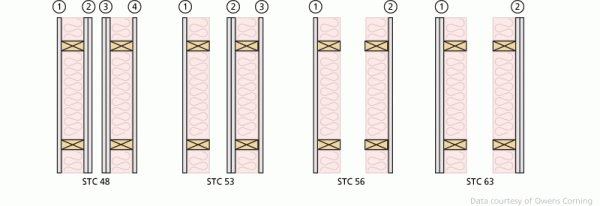
How does air cavity depth affect soundproofing?
Not all air cavities are created equal - this is one case where size matters. A large air cavity can be a great isolator, especially in decoupled systems. A small air cavity, on the other hand, can make things worse. Compare the performance of these two glass panels when we increase the air cavity.
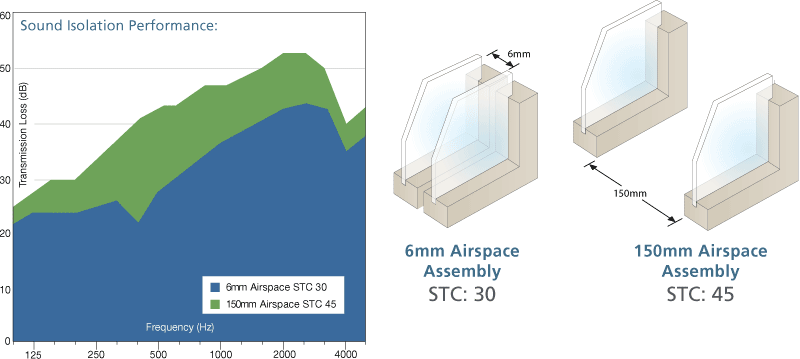
We see that one large air cavity has a real benefit for soundproofing. Interestingly, if we add a second air cavity that is small, our performance plummets.
Sound Isolation Performance: Each system has approximately the same mass
When we introduce a small air cavity, things improve, but not nearly as well as if we had a single larger cavity. We’ve doubled the drywall, added a resilient channel, and added insulation. However, this small cavity example does not add much, especially considering the time and expense to install it.
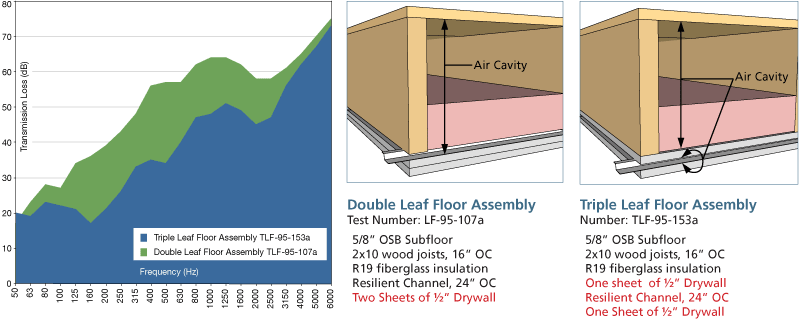


But see what happens using the same materials, but avoiding the triple leaf altogether:

Above, the introduction of a larger air cavity next to the first improves sound deadening. But even better performance will be achieved if the two air cavities were unified while decoupling the ceiling drywall. Why does the size of the air cavity matter? The answer is resonance.

The resonating air cavity
We’ve all blown across the top of a soda pop bottle or held a seashell up to our ear. These are two examples of resonating air cavities. Resonance can really make things loud.
Resonance is a frequency-dependent phenomenon. The soda pop bottle will always have the same frequency or musical “note,” no matter how hard you blow. Want to change the frequency? Add some water. The now smaller air cavity will have a higher resonance frequency and therefore “play” a higher note. The size of the air cavity, therefore, has a corresponding resonance frequency.
How does resonance affect the soundproofing ability of a wall or ceiling? Let’s say we have a single air cavity. Let’s also say because of its size, the air cavity also has a natural resonance of 300 Hz. At resonance, the air cavity amplifies that frequency and helps pass it through the wall or ceiling, spreading sound instead of stopping it.
We know that any cavity will resonate at some frequency, and poor sound isolation results. We can’t prevent resonance, but we can move the resonance point to a frequency that we don’t encounter very often. Such a frequency would be low, since low frequencies are less commonly heard.
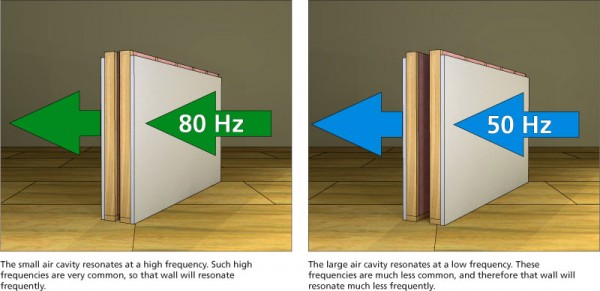
What else defines the resonance point?
If we assume the walls are decoupled, then absorption and mass will also affect the frequency. Adding absorption (insulation) will lower that resonance point. A wall that has a lower resonance point will stop low frequencies better.
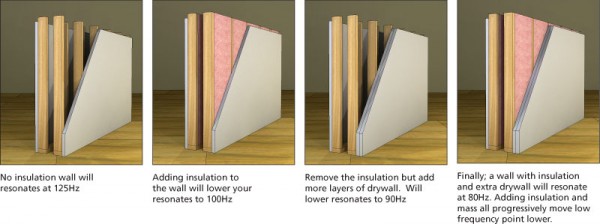
How concrete and drywall furring channels affect resonance
Single concrete structures present an interesting acoustical phenomenon. It is a very common practice to want to drywall a concrete wall or ceiling to increase the sound isolation or aesthetics. Such a practice will introduce a small air cavity on one or both sides of the concrete. What happens when we introduce this air cavity?
Here we see a concrete wall assembly and the corresponding STC Transmission Loss graph. The higher the line, the greater the sound isolation.
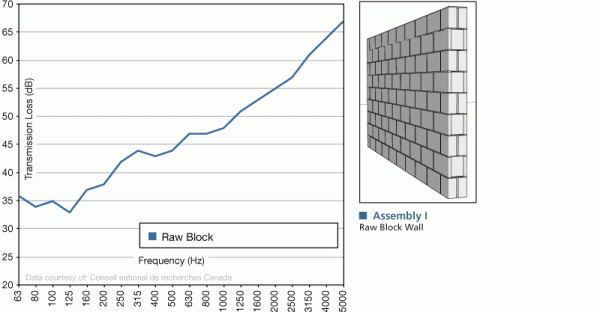
Now let’s attach a sheet of drywall directly to the block wall. Note that there is an unavoidable tiny air cavity between the drywall and the block. We can see that the performance is very slightly increased from 400 to 2500Hz, but performance is slightly reduced below 400Hz.
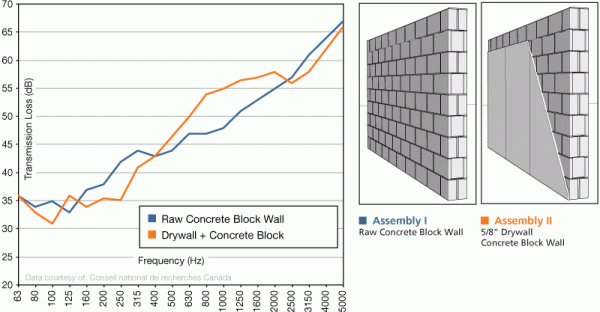
Next, we’ll attach the wood furring strip to the block, and then add the drywall on one side. The air cavity is larger now and we see improvement across a broader frequency range, now from 180Hz to 2500Hz. Also, we note that the curve is higher now, representing more sound being blocked at those frequencies. However, we also see a reduced performance below 180Hz. Worse performance than the smaller air cavity we just looked at.
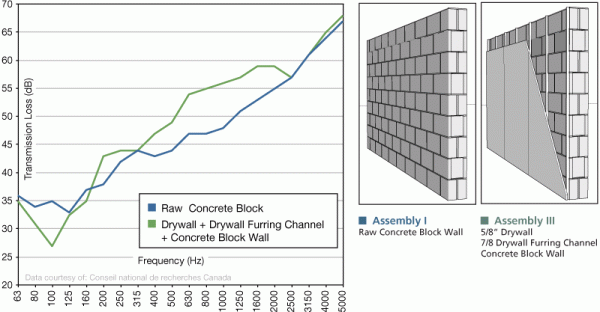
Next, we’ll attach wood furring strip and drywall to both sides. This will give us the largest air cavity yet. We see the same improvement range of 180Hz to 2500Hz, but the curve is much higher, so higher frequencies are better isolated. However, our low-frequency performance is also the worst of all walls looked at so far.
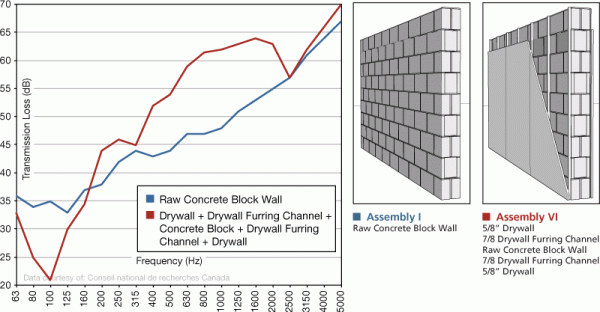
Finally, let’s add insulation to the furring channel and drywall on one side. For thermodynamic reasons, insulation essentially mimics a somewhat larger air cavity. When we compare the test data, as anticipated we see the performance fall somewhere between the small air cavity and large air cavity tests (walls III and IV).
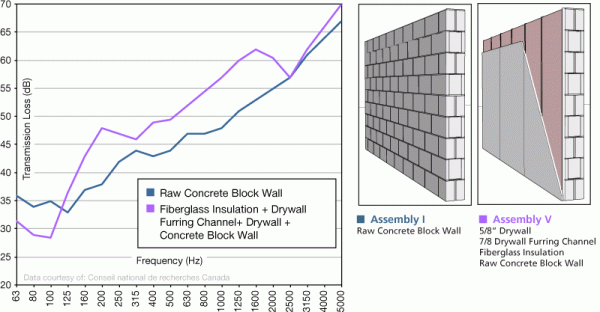
The bottom line: For concrete walls and ceilings, bigger air cavities are better, but decoupling the mass is the real key. While lower frequencies still suffer, the majority of the frequency spectrum is improved. As long as the system is coupled, performance will be seriously compromised in the low frequencies.

